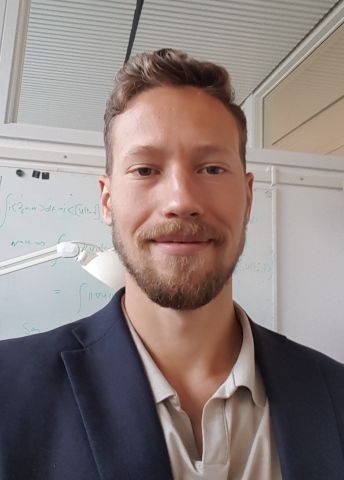
Program for mathematics 2022
Grant to a post-doctoral position abroad
Dr Johan Wärnegård
KTH Royal Institute of Technology
Postdoc at Columbia University, New York, USA
Grant to a post-doctoral position abroad
Dr Johan Wärnegård
KTH Royal Institute of Technology
Postdoc at Columbia University, New York, USA
Models for a connected world
Johan Wärnegård received his doctoral degree in mathematics from KTH Royal Institute of Technology in 2021. Thanks to a grant from the Knut and Alice Wallenberg Foundation, he will hold a postdoctoral position with Professor Qiang Du at Columbia University, New York, USA.
A central problem in applied mathematics is the development of models and algorithms for numerical simulations of actual phenomena. Difficult, time-consuming and expensive experiments could then be replaced by computer simulations. One such physics experiment , considered in the project, concerns Bose-Einstein condensates. These form when particles are cooled to almost absolute zero and begin to behave like a single large atom. Instead of describing each particle and its quantum properties separately, it becomes possible to study quantum physics on a macroscopic scale through the collective behaviour of the condensate.
Nonlinear partial differential equations are used to calcualte how the condensate changes over time, but these are difficult to solve. Nonlinear means that the entire solution cannot be calculated as the sum of partial solutions to simpler problems. Partial differential equations often lack exact solutions and are instead solved numerically using computers that find approximate solutions. For the Bose-Einstein condensate, a computer would have to compute for years on end.
Therefore, new mathematical tools are needed to speed up the calculations. One way of constructing more efficient algorithms is to develop the standard multiscale methods. These first give the problem an exact solution locally, on a small scale, and, in the next step, a solution is searched for, on a greater length and time scale but with somewhat less precision. In this last step, the problem becomes nonlocal since great care has to be taken with respect to how the local solutions interact, in an additionally nonlinear fashion, to form the solution on the greater scale.
New models for nonlocal phenomena could not only be useful for describing Bose-Einstein condensates and quantum physics, but also for an increasing quantity of phenomena in which the local and nonlocal are linked. For example, a self-driving vehicle decides how to act locally by also considering how vehicles further away are moving.